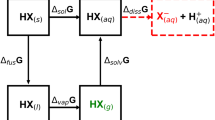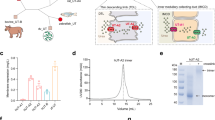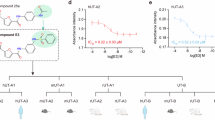Abstract
CONSIDERABLE evidence1 has been presented for the polar structures I and II as important contributory forms of urea in aqueous solution and in the solid state. This view has been criticized by Bell, Gillespie and Taylor2 on the grounds of electrometric titration data. The observation that buffering of urea solutions can only be detected at low pH values has been interpreted by these authors to mean that urea is a weak monacid base having the uncharged structure III. This result, however, would appear to be compatible with the polar structure of the molecule.
This is a preview of subscription content, access via your institution
Access options
Subscribe to this journal
Receive 51 print issues and online access
$199.00 per year
only $3.90 per issue
Buy this article
- Purchase on SpringerLink
- Instant access to full article PDF
Prices may be subject to local taxes which are calculated during checkout
Similar content being viewed by others
References
For refs. see Taylor and Baker, "Organic Chemistry of Nitrogen" 280 et seq. (Oxford, 1937).
Bell, Gillespie and Taylor, Trans. Farad. Soc., 39 137 (1943).
Bjerrum, Z, phys. Chem., 104, 147 (1923).
Author information
Authors and Affiliations
Rights and permissions
About this article
Cite this article
HARRIS, J., ROBSON, A. Structure of Urea. Nature 161, 98 (1948). https://doi.org/10.1038/161098a0
Issue date:
DOI: https://doi.org/10.1038/161098a0
This article is cited by
-
Processing of Monazite Mineral Concentrate for Selective Recovery of Uranium
Chemistry Africa (2019)



